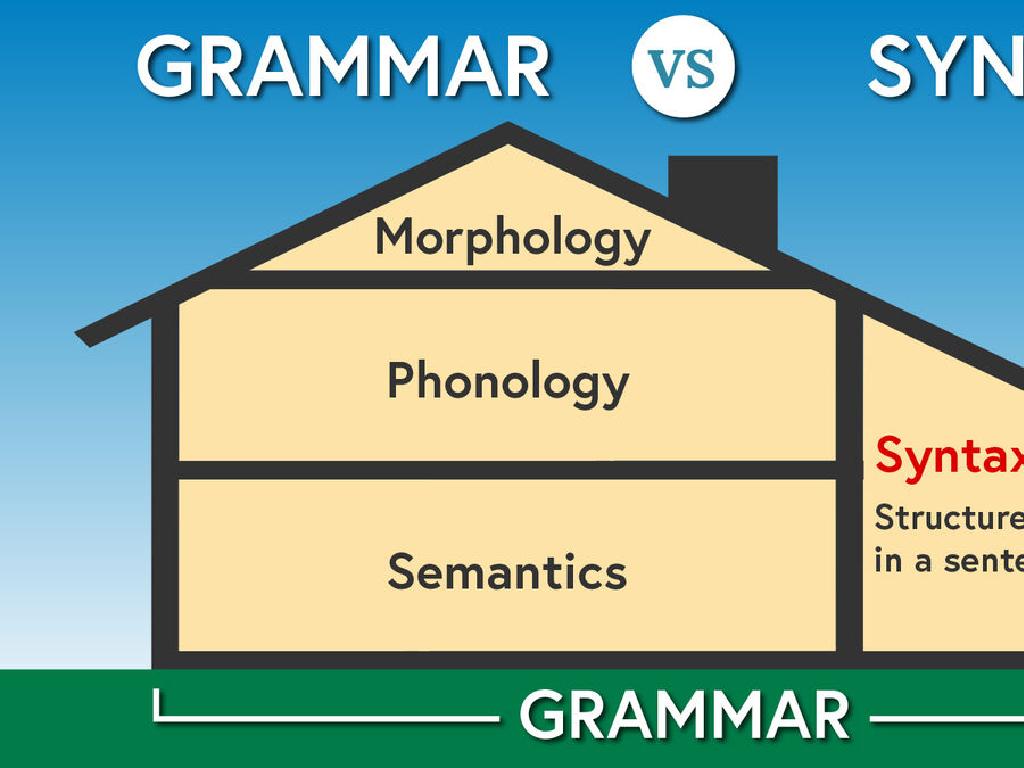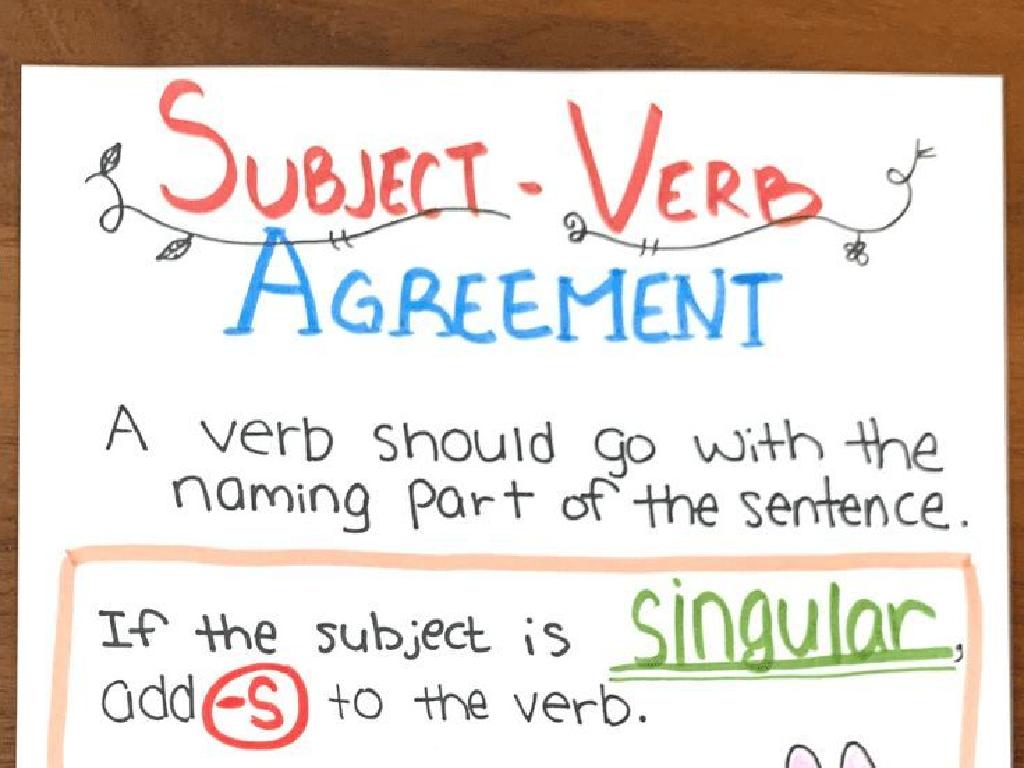Ordinal Numbers - Up To Tenth
Subject: Math
Grade: Kindergarten
Topic: Counting Forward And Back To 10
Please LOG IN to download the presentation. Access is available to registered users only.
View More Content
Welcome to Ordinal Numbers!
– Learning ordinal numbers to tenth
– Ordinal numbers show position
– Like in a race: 1st, 2nd, 3rd place
– Counting positions: first to tenth
– We’ll count: 1st (first), 2nd (second), up to 10th (tenth)
– Practice with fun examples
– Example: Line up toys from 1st to 10th
|
This slide introduces Kindergarten students to the concept of ordinal numbers, which are used to describe the position of items in a sequence. Start by explaining that ordinal numbers are different from the numbers they count with because they show ‘order’ or ‘position’ in a list. Use relatable examples such as positions in a race or lining up in class. Engage the students by counting together and using visual aids like number cards or pictures. Encourage them to practice by organizing objects or illustrations in order from first to tenth. The goal is to make them comfortable with the terms and the concept of order.
Learning Ordinal Numbers
– What are ordinal numbers?
– Numbers that tell position: first, second, third, etc.
– They show the order of things
– Examples: 1st, 2nd, 3rd, to 10th
– 1st (first) in a race, 2nd (second) in line, 3rd (third) in a contest
– Practice ordering with fun activities
– Use toys or snacks to create a sequence and label them
|
This slide introduces Kindergarten students to the concept of ordinal numbers, which are used to describe the position of objects or people in a sequence. Start by explaining that ordinal numbers are different from the numbers they count with because they show ‘order’ or ‘position’. Use everyday examples like lining up for recess or ranking in a competition to make it relatable. Incorporate hands-on activities where students can physically arrange items and label them with ordinal numbers to reinforce learning. Encourage participation and use positive reinforcement as they grasp the concept of ordering from first to tenth.
Let’s Practice Ordinal Numbers!
– Find objects in 1st position
– Look at the line of objects, which is first?
– Which object is in 2nd?
– After the 1st, which comes next?
– Remember: 1st, 2nd, then 3rd…
– Practice counting up to 10th
– Let’s count together in order!
|
This slide is designed to engage Kindergarten students in a practical activity to understand ordinal numbers. The activity involves identifying the position of objects in a line. Start with the first object and ask the students which one is in the 1st position, then move on to the 2nd, and so on, up to the 10th. Reinforce the concept that ‘1st’ means the first one, ‘2nd’ is the next one, and continue this pattern. Encourage the students to practice by lining up items or using illustrations and to count out loud together. This hands-on activity will help solidify their understanding of ordinal numbers in a fun and interactive way.
Ordinal Numbers in Our Lives
– Ordinal numbers in daily life
– Like 1st for the winner of a race
– Birthdays on calendar dates
– Your birthday might be on the 5th of a month
– Recognize ordinal numbers
– Where else have you seen numbers like 1st, 2nd, 3rd?
– Share examples in class
|
This slide introduces the concept of ordinal numbers to Kindergarten students by relating it to familiar events such as birthdays and calendar dates. Start by explaining that ordinal numbers tell us the position of something in a list, like which day comes first, second, third, and so on in a month. Encourage the children to think of other places they have seen or heard ordinal numbers, such as in races (1st place), lining up (2nd in line), or floors in a building (3rd floor). This will help them understand that ordinal numbers are all around us. During the next class, have a discussion where students can share examples of ordinal numbers they have found in their daily lives.
Ordinal Number Match Game
– Match ordinal numbers to positions
– Find the 3rd animal in the race
– Is it the rabbit, the turtle, or the dog?
– Discover which animal is 5th
– Could it be the cat, the duck, or the frog?
– Share your answers with the class
|
This interactive game is designed to help Kindergarten students understand and apply ordinal numbers from first to tenth. Set up a visual representation of a race with various animals in different positions. Students will be asked to identify which animal is in the 3rd and 5th positions. This activity will reinforce their understanding of ordinal numbers in a fun and engaging way. Encourage students to explain their thought process as they match the ordinal numbers to the correct positions. After the activity, have a discussion with the class to share their answers and ensure everyone understands how to use ordinal numbers.
Story Time with Ordinal Numbers
– Listen to a story about ducks
– Call out ordinal numbers together
– Understand ‘first’, ‘second’, ‘third’
– ‘First’ means number one in line, ‘second’ is after first, and ‘third’ comes next.
– Practice with up to ‘tenth’ duck
– After ‘third’ we have ‘fourth’, ‘fifth’… all the way to ‘tenth’.
|
This slide introduces ordinal numbers through an interactive story about ducks swimming in a pond. As the story progresses, prompt the children to call out the ordinal numbers (first, second, third, etc.) as each new duck is introduced. This activity helps students to associate the concept of order with a fun and engaging narrative. Encourage the children to use their fingers to count and visualize the position of each duck. Reinforce the learning by asking questions like ‘Which duck is in the fifth position?’ or ‘Who is swimming behind the seventh duck?’ to ensure comprehension.
Class Activity: Ordinal Number Train
– Each student receives a number
– Line up in order of your numbers
– Engine starts with 1st position
The engine is the leader of our train
– Carriages follow up to 10th
Each carriage follows, like in a real train
|
This activity is designed to help Kindergarten students understand and apply ordinal numbers in a fun and interactive way. Each student will be given a number from 1 to 10, which corresponds to their position in the train. The teacher will guide the students to line up in the correct order, reinforcing the concept of ordinal numbers. For example, the student with number 1 will be the ‘engine’ or the first in line, followed by the student with number 2 as the ‘second carriage’, and so on. This visual and physical activity helps students grasp the idea of order and sequence. Possible variations of the activity could include rearranging the train, having students identify their position without looking at their number, or even creating a paper train with ordinal numbers that the students can color and assemble.






